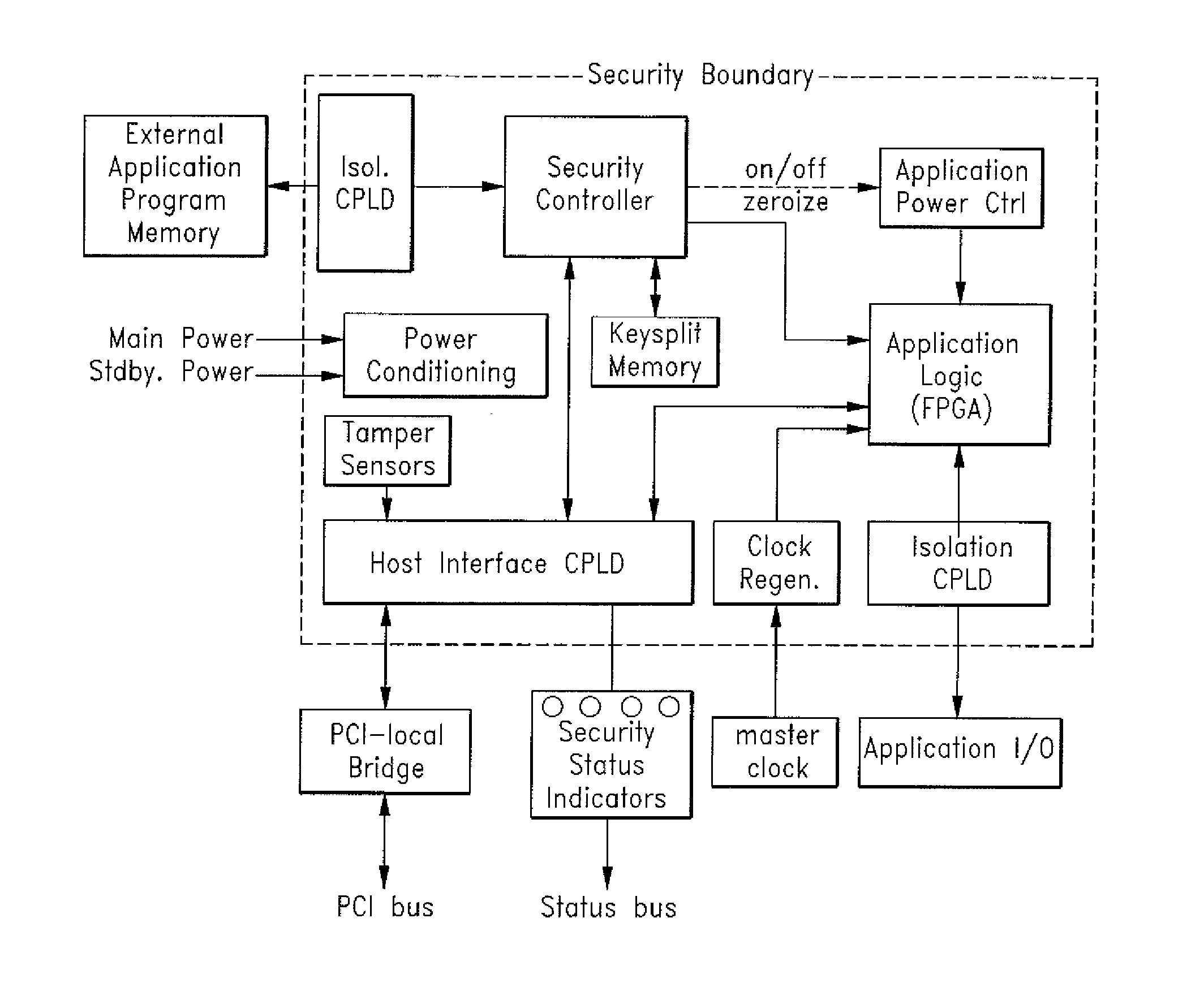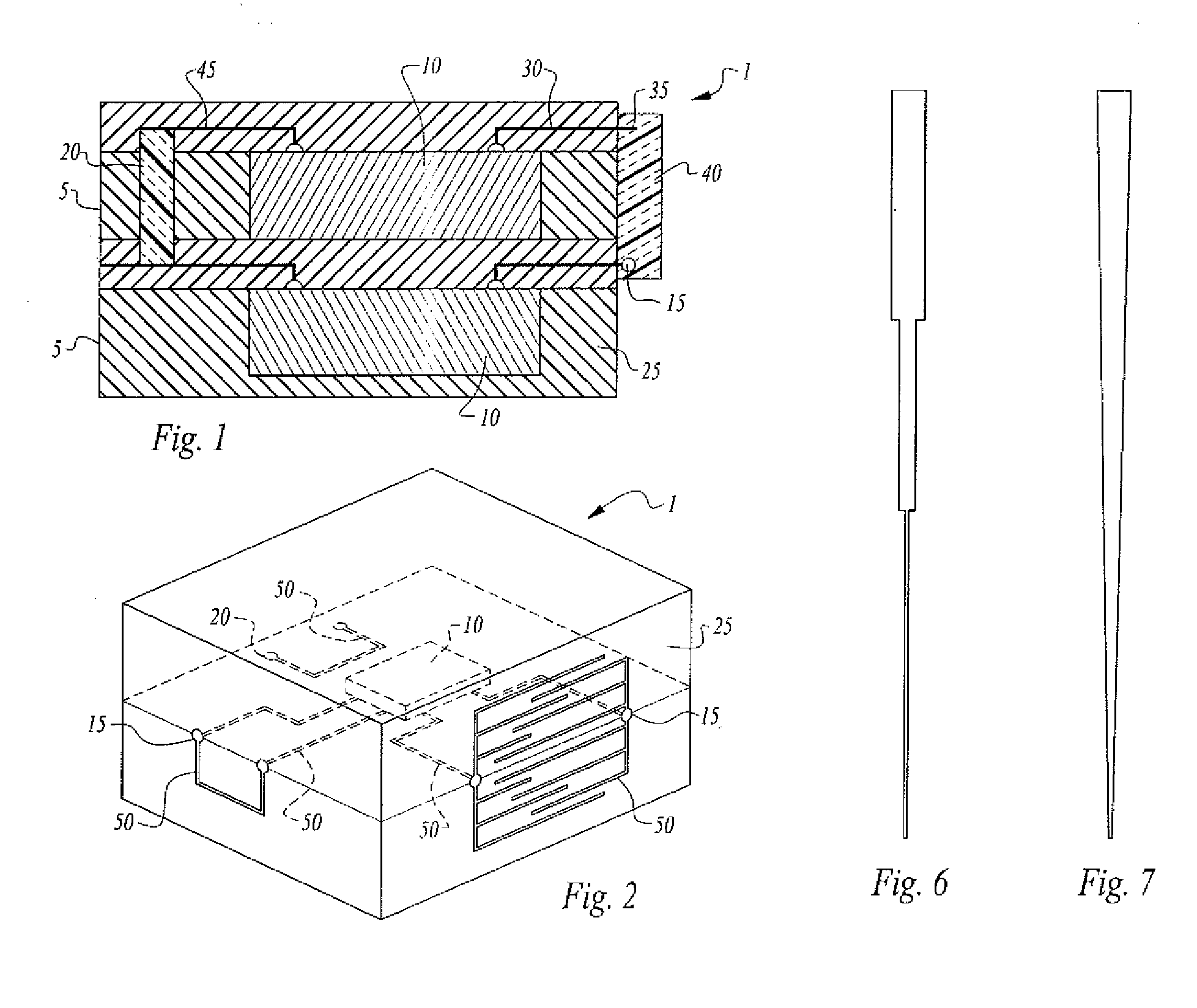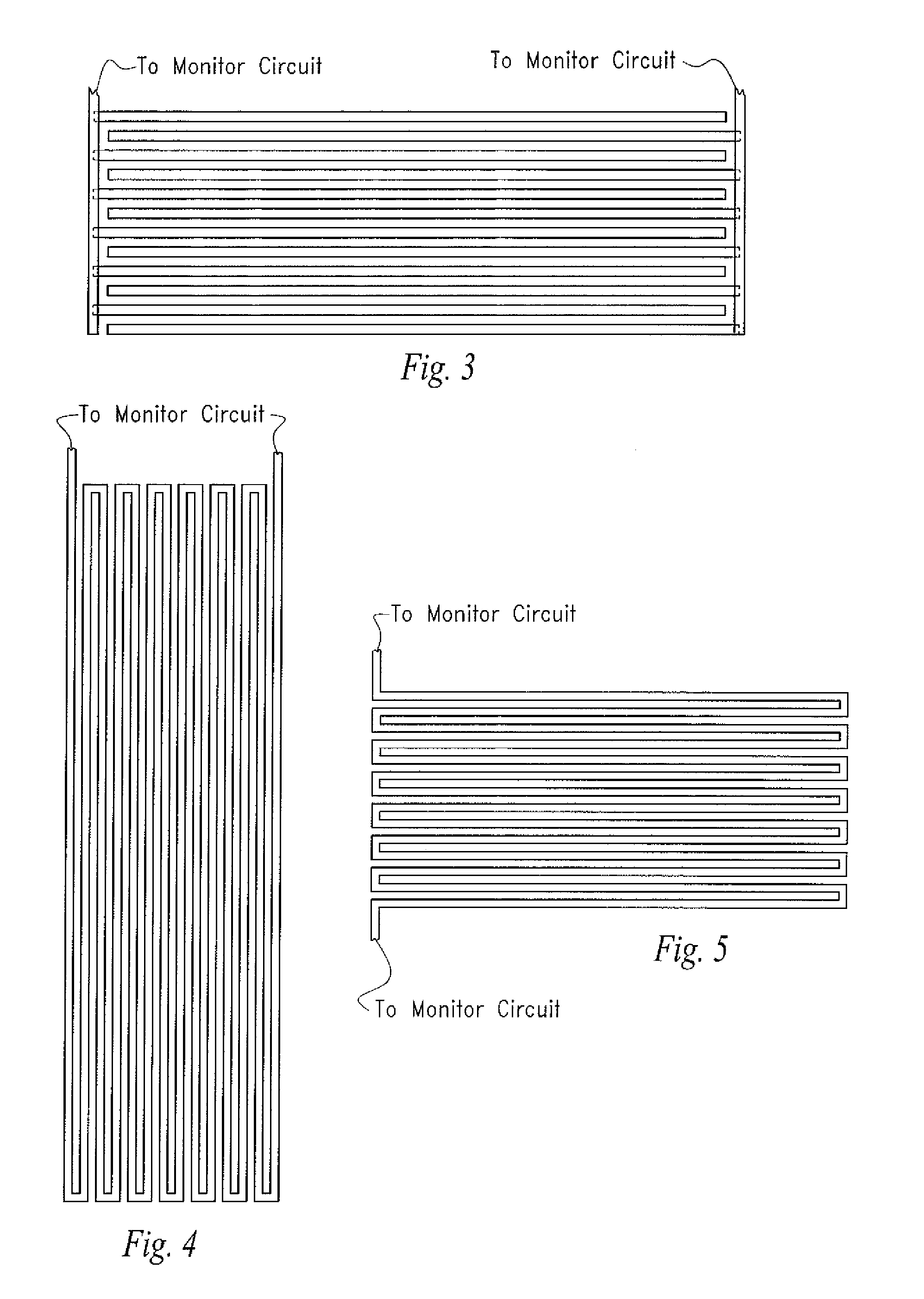Secure Anti-Tamper Integrated Layer Security Device Comprising Nano-Structures
a security device and integrated layer technology, applied in the direction of resistance/reactance/impedence, instruments, pulse techniques, etc., can solve the problems of difficult or impossible reverse engineering of protected circuits without complex test equipmen
- Summary
- Abstract
- Description
- Claims
- Application Information
AI Technical Summary
Benefits of technology
Problems solved by technology
Method used
Image
Examples
Embodiment Construction
[0030]Stacked microelectronic modules comprised of layers containing integrated circuitry are desirable in that the three-dimensional structure provides increased circuit density per unit area. The elements in a module are generally arranged in a stacked configuration and may comprise stacked silicon die, stacked prepackaged integrated circuit packages, stacked modified prepackaged integrated circuit or stacked neo-layers such as are disclosed in the various U.S. patents below.
[0031]The patents below disclose inventions wherein layers containing integrated circuits chips are stacked and interconnected using any of a number of stacking techniques known to those skilled in the art. For example, Irvine Sensors Corporation, assignee of the instant application, has developed several patented techniques for stacking and interconnecting multiple integrated circuits. Some of these techniques are disclosed in U.S. Pat. Nos. 4,525,921; 4,551,629; 4,646,128; 4,706,166; 5,104,820; 5,347,428; 5,...
PUM
 Login to View More
Login to View More Abstract
Description
Claims
Application Information
 Login to View More
Login to View More - R&D
- Intellectual Property
- Life Sciences
- Materials
- Tech Scout
- Unparalleled Data Quality
- Higher Quality Content
- 60% Fewer Hallucinations
Browse by: Latest US Patents, China's latest patents, Technical Efficacy Thesaurus, Application Domain, Technology Topic, Popular Technical Reports.
© 2025 PatSnap. All rights reserved.Legal|Privacy policy|Modern Slavery Act Transparency Statement|Sitemap|About US| Contact US: help@patsnap.com



